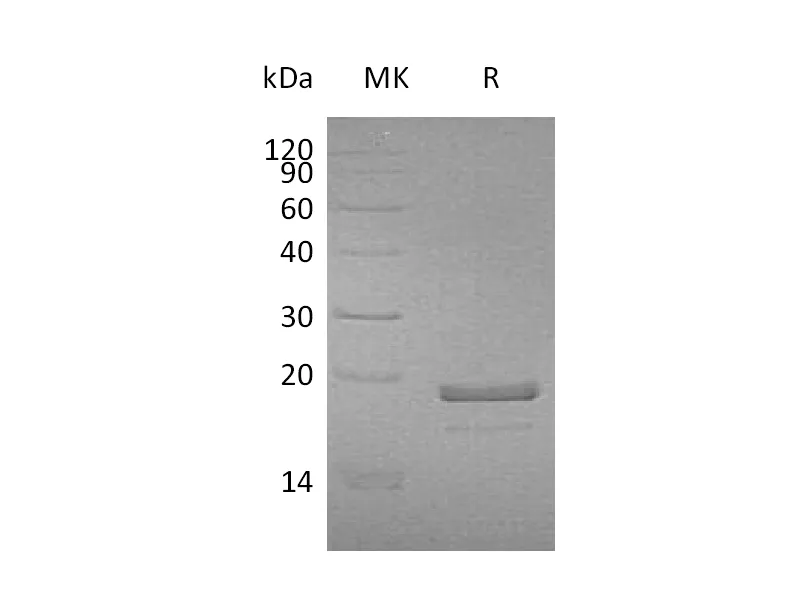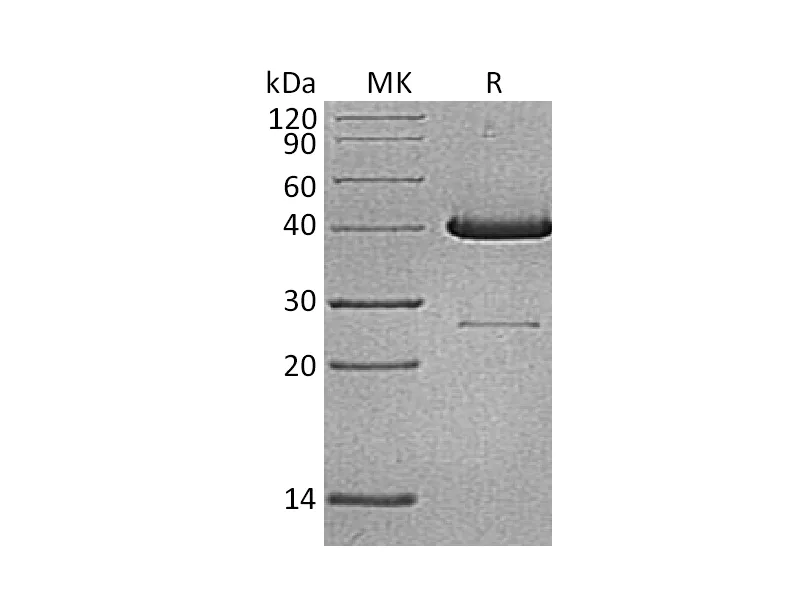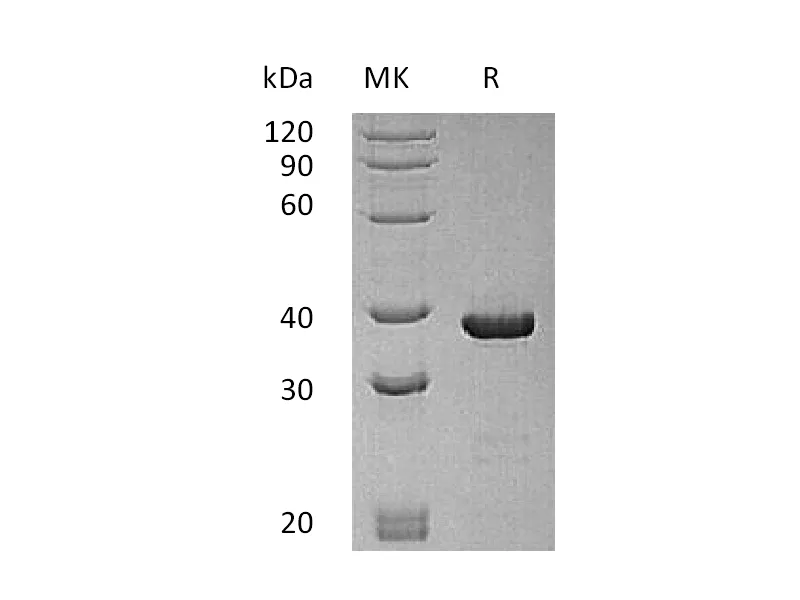| 产品名称 |
Recombinant Human OLFM4 (C-10His) |
| 英文名称 |
Olfactomedin-4/OLFM4 |
| 纯度 |
Greater than 95% as determined by reducing SDS-PAGE |
| 内毒素 |
<1 EU/µg as determined by LAL test. |
| 蛋白构建 |
Recombinant Human Olfactomedin-4 is produced by our Mammalian expression system and the target gene encoding Asp21-Gln510 is expressed with a 10His tag at the C-terminus. |
| Accession |
Q6UX06 |
| 表达宿主 |
Human Cells |
| 种属 |
Human |
| 预测分子量 |
56.9 KDa |
| 制剂 |
Lyophilized from a 0.2 μm filtered solution of PBS, 5%Trehalose, PH7.4. |
| 运输方式 |
The product is shipped at ambient temperature.Upon receipt, store it immediately at the temperature listed below. |
| 稳定性&储存 |
Store at ≤-70°C, stable for 6 months after receipt.Store at ≤-70°C, stable for 3 months under sterile conditions after opening. Please minimize freeze-thaw cycles. |
| 复溶 |
Always centrifuge tubes before opening.Do not mix by vortex or pipetting.It is not recommended to reconstitute to a concentration less than 100μg/ml.Dissolve the lyophilized protein in distilled water.Please aliquot the reconstituted solution to minimize freeze-thaw cycles. |
| 分子别名 |
| Olfactomedin-4; OLM4; Antiapoptotic protein GW112; G-CSF-stimulated clone 1 protein; hGC-1; hOLfD; OLFM4; GW112 |
| 背景介绍 |
| Olfactomedin-4/OLFM4 is a secreted protein which contains one olfactomedin-like domain. OLFM4 is expressed during myeloid lineage development,it strongly expressed in the prostate,small intestine,colon and moderately expressed in the bone marrow and stomach. OLFM4 is an antiapoptotic factor that promotes tumor growth. It expressed at high levels in stomach cancer and colon cancer tissues. it promotes proliferation of pancreatic cancer cells by favoring the transition from the S to G2/M phase. In myeloid leukemic cell lines, OLFM4 inhibits cell growth and induces cell differentiation and apoptosis. Through interaction with cell surface lectins and cadherin, OLFM4 facilitates cell adhesion. It may play a role in the inhibition of EIF4EBP1 phosphorylation/deactivation. Induction of OLFM4 in cancer cells was reported to have a novel antiapoptotic action via binding to the potent apoptosis inducer GRIM-19. |
注意事项
本司产品仅用于科研,不用于临床诊断和治疗




